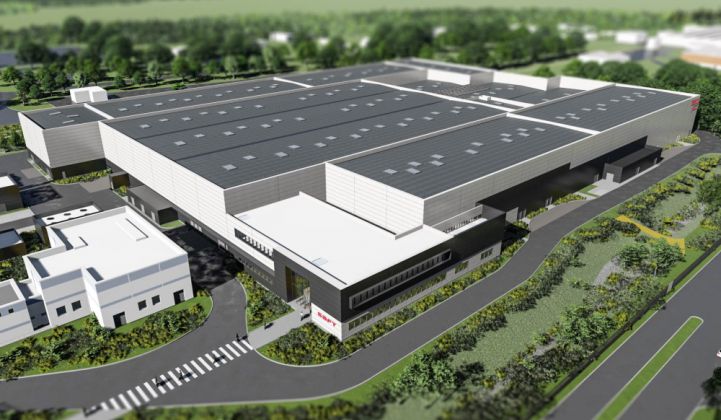Europe is sinking billions of dollars into research in an attempt to overturn Asia’s dominance of the battery market, but analysts believe it could be in vain.
Along with various national initiatives, the European Union has put half a billion euros ($550 million) into battery projects within its Horizon 2020 global competitiveness program, which had a total budget of €80 billion ($88 billion) from 2014 to 2020.
And last December the European Commission approved €3.2 billion of state funding under its "important project of common European interest" (IPCEI) rules. The investment will support battery research and innovation across Belgium, Finland, France, Germany, Italy, Poland and Sweden.
The project is scheduled to run until 2031 and is expected to unlock a further €5 billion in private investment. French oil firm Total and German automaker Opel will receive €1.3 billion of public funding on IPCEI terms for a major manufacturing program. It could see as much as 48 gigawatt-hours of capacity added across sites in France and Germany.
"Battery production in Europe is of strategic interest for our economy and society because of its potential in terms of clean mobility and energy, job creation, sustainability and competitiveness,” Margrethe Vestager, the European commissioner for competition, said in a statement.
Given the array of various support programs, “it is difficult to calculate the exact amount of funds currently invested” across Europe, said Doriana Forleo, communications and events manager at the European Association for Storage of Energy. But Bloomberg last July reported that total battery supply-chain investments from European governments, manufacturers, development banks and commercial lenders could top €100 billion.
Dwarfing U.S. energy storage spending
Although comparative figures from other regions are hard to come by, Europe's energy storage funding effort is potentially several orders of magnitude larger than what is going on in North America.
The Trump administration’s fiscal year 2020 budget proposal devoted $158 million to establish an advanced energy storage initiative within the Department of Energy (DOE). In October last year, the U.S. Office of Energy Efficiency and Renewable Energy celebrated an annual $25 million for a Critical Materials Institute and $15 million in solid-state battery research awards from the DOE’s Vehicle Technologies Office.
Yet while Europe seems certain to leave North America behind in terms of research, there is a big question mark over whether the cash Europeans are throwing into innovation will allow the European Union to surpass Asia’s current dominance of the battery market. It certainly seems unlikely based on manufacturing capacity alone.
Although European battery manufacturing is growing apace, much of the planned fabrication capacity in the EU is from Asian giants. Last October, for example, the Chinese manufacturer Contemporary Amperex Technology Co. Limited (CATL) broke ground on a factory in Thuringia, Germany that will boast a 14-gigawatt-hour-a-year production capacity by 2022 and represents an investment of €1.8 billion ($2 billion).
These Asian incursions into the European battery market are being actively supported by funding bodies anxious to maintain a supply of low-cost batteries for Europe’s rapidly electrifying auto industry.
Last month the European Investment Bank approved a €480 million loan to help the South Korean battery behemoth LG Chem build a €1.5 billion, 35-gigawatt-hour-a-year-capacity factory in Poland.
Inventing a route to growth in batteries
Outgunned on manufacturing scale, Europe is betting on research to uncover a homegrown secret sauce that could allow it to undercut Asian battery makers on price. Forleo said the EU is injecting cash into concepts across all technology readiness levels (TRLs) and chemistries.
“Europe is also trying to cover the whole value chain, from raw materials to advanced manufacturing, applications and recycling,” she said.
One initiative even aims to innovate the process of innovation itself.
Defacto (for "Battery DEsign and manuFACTuring Optimization through multiphysic modeling") was launched in January with almost €6 million ($6.6 million) in Horizon 2020 funding to accelerate cell development research processes.
Its objective is to create a software tool that mimics cell behavior and can be used in place of physical experiments. Defacto's coordinator, Elixabete Ayerbe Olano, said that by 2023 the project might be able to shave 30 percent off the cost and time required to develop TRL6 concepts.
For more technologically ready cell designs at full scale, from TRL7 to TRL9, the savings could be anywhere from 50 percent to 76 percent, she said.
Despite such lofty ambitions, catching up with Asia’s battery market remains “a tall order,” according to Rory McCarthy, a principal analyst with the global energy storage team at Wood Mackenzie Power & Renewables.
Even without state support, Asian companies such as LG Chem and Panasonic have “tens of billions” in dollars' worth of orders coming from automotive manufacturers, he said.
This gives the companies significant financial muscle to put toward research, not to mention the fact that some Asian firms have been perfecting battery technologies for the last 30 years.
Given Asia’s head start on lithium-ion batteries, looking to develop the next generation of products that could one day take over from today’s chemistries “strategically would be intelligent,” said McCarthy.
But European policymakers would need to take a long view, he said. “Any technology they invent in the next 10 years will take another 20 years to get to market,” he commented.




